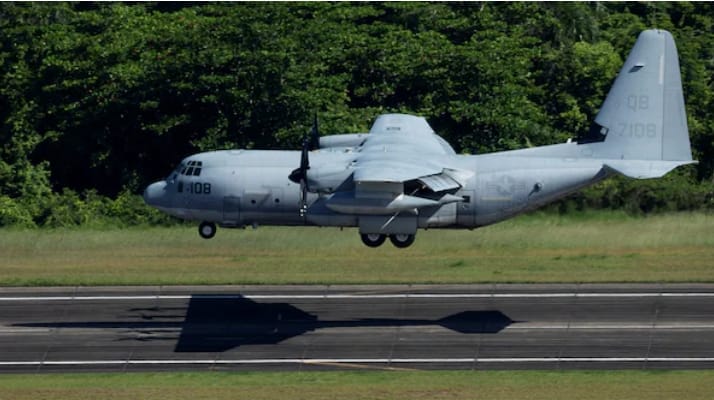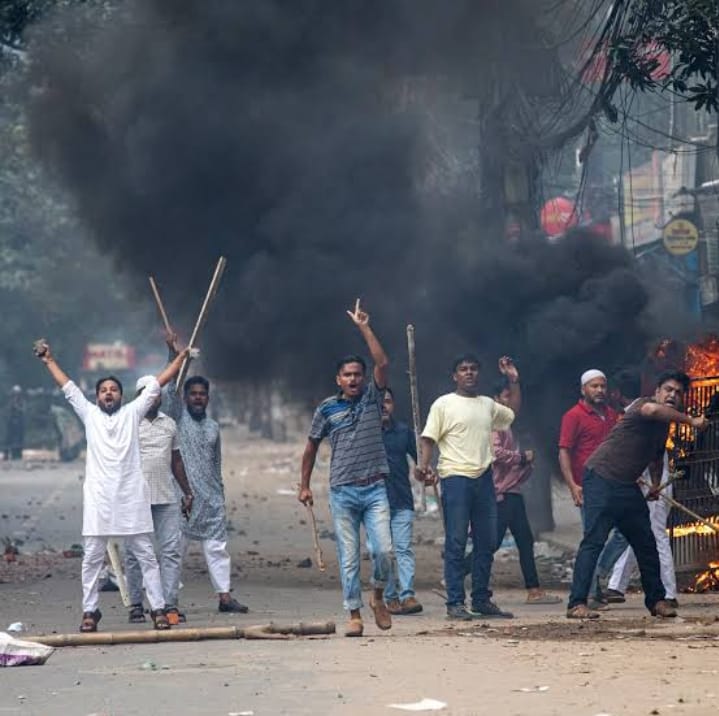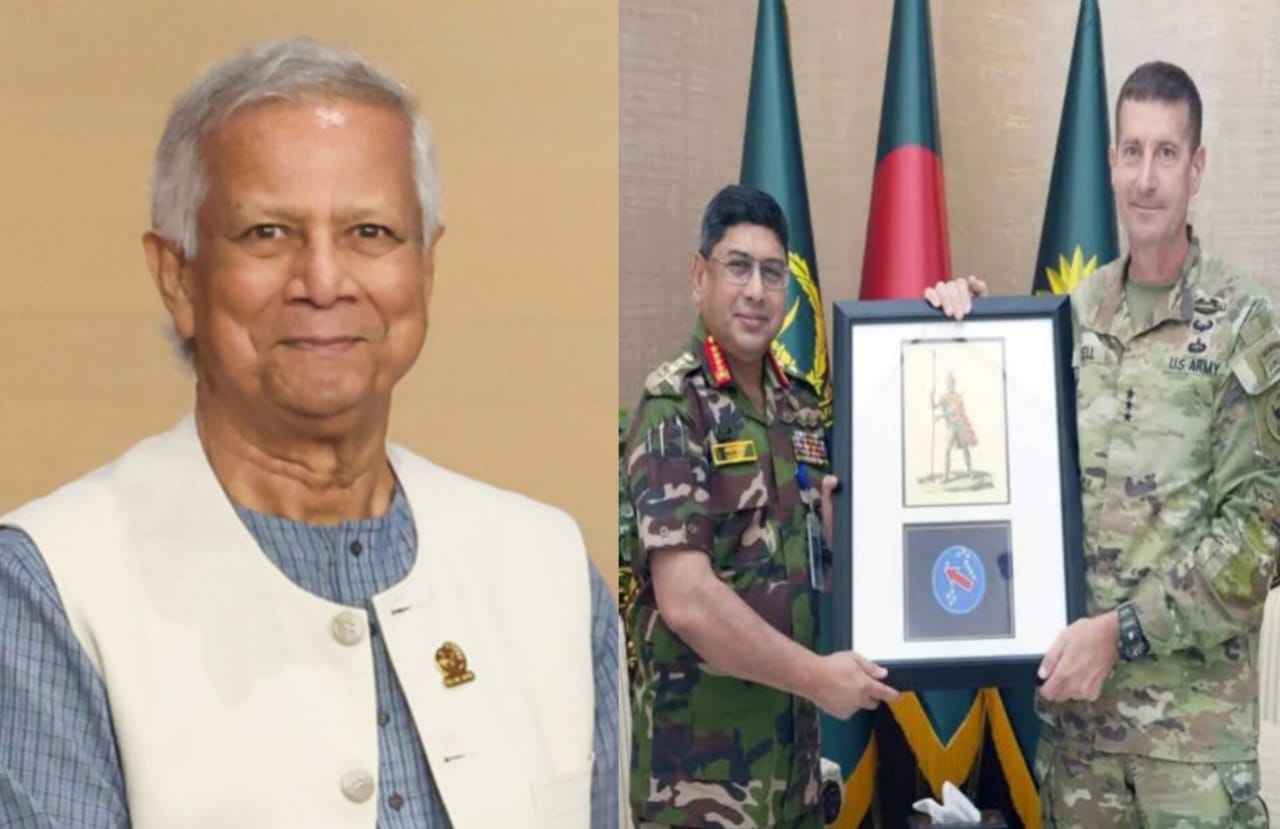-By Animesh Pratap Singh
The Quiet Landfall: Drills in the Wake of Upheaval

Since Sheikh Hasina’s August 2024 ouster amid student protests, Bangladesh’s interim leader Muhammad Yunus has greenlit a surge in US military engagements—framed as routine but timed to reshape Dhaka’s alliances. On September 13, 2025, a US C-130J Super Hercules delivered 92 airmen to Chittagong for Operation Pacific Angel 25-3, a seven-day humanitarian drill with 150 Bangladesh Air Force troops honing medevacs and disaster response. This caps a trio of 2025 exercises: July’s Tiger Lightning in Sylhet (100 Nevada National Guard with Bangladesh Army on jungle counterterrorism) and an impending Tiger Shark for special forces in Cox’s Bazar. No permanent bases, but September 11’s US Army Pacific-Bangladesh talks nodded to “operational flexibility” via potential SOFA pacts.
Geopolitically, Chittagong’s deep-sea port—once China’s Belt and Road prize—sits 200 km from Kolkata, guarding Indian Ocean lanes and India’s Act East corridor. A US rotational presence here could surveil Rohingya flows from Myanmar or Beijing’s “string of pearls” (Hambantota, Gwadar), but it squeezes India’s Siliguri Corridor—the 30-km-wide “Chicken’s Neck” linking 50 million northeasterners. Rumors of “secret Army scouts” in Cox’s Bazar? Debunked as viral fakes; real footprint: 120 US officers prepping at Chittagong’s Radisson Blu.
Historical Undercurrents: Aid, Arms, and Alliances
US-Bangladesh bonds ignited post-1971 independence: Washington recognized Dhaka swiftly, pumping $318 million in aid by 1973—eclipsing India’s Soviet-leaning support. The 1980s saw military ties bloom—300+ Bangladeshi officers trained annually in US academies, positioning America as a hedge against Indian dominance. Post-9/11, counterterrorism and UN peacekeeping (US-equipped blue helmets) deepened the knot. Hasina’s 2009-2024 tenure balanced this with India’s $10 billion trade, Teesta water pacts, and power grids—until her India-exile fall unlocked Yunus’s “multipolar reset”: Tripled US drills, a Zapad-2025 nod to Russia, and August arms deals with China’s Norinco. US fingerprints? Subtle—Yunus, a Nobel laureate with Western ties, eyes these ops as “safer region” builders, per Army Chief Waker-uz-Zaman.
India’s Stake: Strategic Squeeze Amid Great-Power Games
For New Delhi, the optics sting: Hasina’s fall left a vacuum, and Yunus’s US pivot—plus Beijing’s $4 billion Payra loans—signals hedging that could encircle India’s east. Immediate threats? Low—these 200-300 rotational troops drill rotations, not invasions, mirroring India’s robust Yudh Abhyas 2025 (500 US troops, September 15, Uttarakhand). But medium-term risks loom: US SIGINT/drones could potentially influence NE insurgencies or use proxy Rohingya militants against Myanmar’s Army itself or against other ethnic Armies of Myanmar or even inside India (Pakistan influence) ,per intel whispers. Myanmar echoes the alarm, fearing Rakhine incursions. China’s counter? September 10’s Defense Minister Dong Jun slammed US “containment” as futile, while BD’s Sri Lanka naval ties with Beijing persist. India’s play: Leverage $10 billion trade and BIMSTEC to reclaim Dhaka, not paranoia—Quad inclusion for BD could turn peril to parity.
Rohingya Faultline: Camps as Extremist Incubators on Bengal’s Brink

The human underbelly amplifies threats: Cox’s Bazar’s 1.3 million Rohingya refugees (200,000 more inbound by year-end) strain Yunus’s “no more resources” stance, birthing chaos. Post-Hasina amnesties freed once-banned radicals—echoes of 2000s outlawed networks, jailed for bombings and border schemes—now regrouping in camp shadows, rallying via diaspora funds and veiled sermons. No named cabals, but hints abound: “Revived rallies” and “lifted bans” stir militant murmurs—arms rackets, drug-fueled recruitment, 40% of families evading enforcer “knocks.” US drills like Pacific Angel rehearse crisis ops, pledging $50 million aid but demanding China-Myanmar intel—risking proxy blind spots if fringes exploit the flux.
Bengal border bleed? Acute: India’s 2,216-km fence (1,647 km sealed) sees 2025 surges—January’s 24 foiled Bangladeshi pushes with “stateless” hauls; August’s 78 Sundarbans nabbed with radical ink and fakes. Rackets blend migrants with “ideologue imports,” orchestrated by camp handlers—seeding Assam tea belts or Kolkata mills. Manipur-Mizoram leaks 150,000 since mid-2024; July expulsions of 100+ Assam detainees drew HRW fire. BSF drones over the Padma ramp up, but floods or feuds could fan embers into cross-border blazes—refugees as reluctant radicals, India’s northeast as tinder.
Diplomatic Facade: Stances and Subtext
– US: “Indo-Pacific readiness via 50-year ties”—focus on CT, peacekeeping; no meddling claims.
-Bangladesh: “Routine for regional security,” per Waker-uz-Zaman—no basing, just confidence.
-India: MEA muted, but backchannels urge Yunus on borders; September 16’s 120 paratroops in Myanmar signal vigilance.
Verdict: Nimble Alliances in Monsoon Flux
US troops aren’t storming Delhi—they’re weaving a web against China, propping Yunus, and nudging India toward Quad hugs. Rohingya radicals and border leaks add sleeper risks, but Delhi’s economic glue ($10B trade, Teesta) trumps panic. History shifts like Bay tides: Fortify fences, co-opt drills, watch the whispers. South Asia’s board stays fluid—play smart, buddy.
